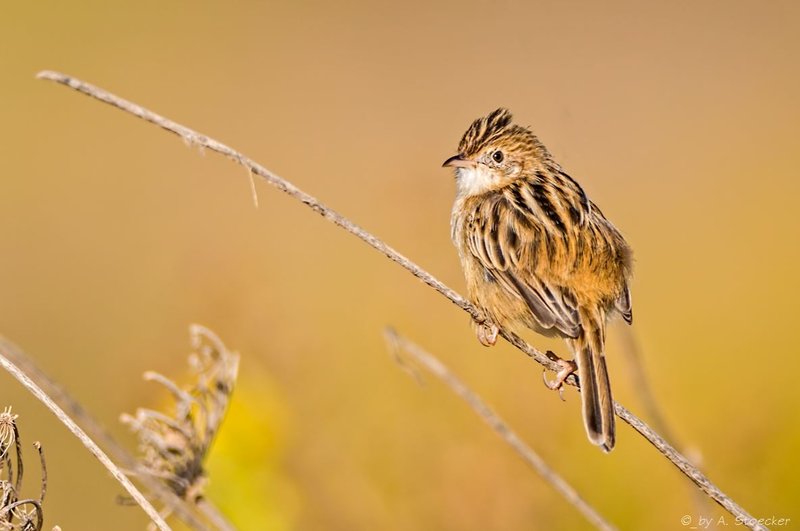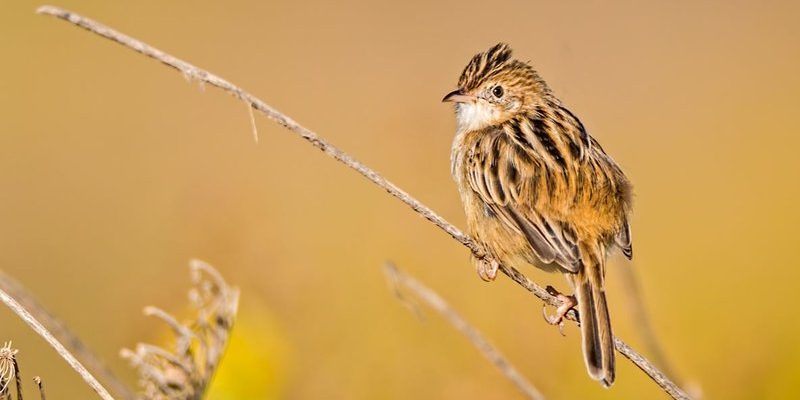
You might be wondering what a Zitting Cisticola is, and trust me, it’s as intriguing as it sounds. This small, lively bird is known for its unique behavior and distinct sound, often found in fields and marshes. Imagine a little fellow, darting through tall grass, chirping away like it’s the life of the party. It’s fascinating how something so small can capture incredible attention with its vibrant personality and enthusiastic calls.
The Zitting Cisticola, scientifically known as Cisticola juncidis, naturally draws birdwatchers and nature enthusiasts alike. Characterized by its brownish coloration and a delightful way of flitting about, this bird has a charm that’s hard to resist. If you’re out in the right habitat—think wetlands or overgrown areas—you might just spot one dancing in the grass, showcasing its lively spirit.
Physical Characteristics
When you first lay eyes on a Zitting Cisticola, you might notice its slender build and somewhat unremarkable colors, usually a mix of browns and buff. However, look closer, and you’ll appreciate the subtle beauty of its plumage. The birds measure about 12–13 centimeters in length, making them quite small compared to many others. Their wings are short and rounded, perfect for quick maneuvers among reeds and grasses.
But it’s not just about size; the Zitting Cisticola also has a distinctive long, pointed tail that it frequently flicks and fans out. This behavior is part of their display, adding a bit of flair to their already charming looks. The males have a slightly brighter appearance than females, which can be slightly more muted in color. This difference is typical in many bird species, as the males often need to show off to attract females during the breeding season.
Habitat and Distribution
You’ll typically find Zitting Cisticolas in moist, grassy areas. They love habitats like wetlands, reed beds, and even overgrown pastures. In these locations, they can blend in beautifully with their surroundings, making them a bit tricky to spot. They rely on tall grasses to hide from predators but also for nesting and feeding. Their nests are usually built close to the ground and are intricately woven, which is an incredible feat for a bird of this size.
In terms of distribution, the Zitting Cisticola can be found in various regions, primarily across Europe, Asia, and Africa. They tend to favor areas with abundant vegetation, where they can thrive and reproduce. Interestingly, these birds are also known to be migratory in some parts of their range, flying to warmer areas during colder months. This migratory behavior showcases their adaptability to changing environments.
Feeding Habits
The diet of a Zitting Cisticola consists mainly of insects and seeds. These birds are often seen foraging on the ground or among grasses, pecking at the soil or plant matter for tasty bites. Their slender beaks are perfectly designed for this type of feeding, allowing them to extract insects from crevices and pick seeds. It’s fascinating to observe them as they hop about, ever-alert for the next snack.
During the breeding season, their diet may shift slightly to include more protein-rich insects, which are essential for feeding their young. This shift helps ensure that their chicks grow strong and healthy. If you’re out in the field, watch closely; you might see them swiftly darting from one spot to another, constantly on the move in search of food.
Behavior and Breeding
The behavior of the Zitting Cisticola is one of its most captivating features. Known for their energetic displays, particularly during mating season, males will often perch up high and sing loudly to attract females. Their call resembles a zizzling sound—a delightful auditory experience that gives them their name. It’s almost like they’re putting on a concert just for you!
When it comes to breeding, these birds are quite dedicated. Males will defend their territory vigorously, using their songs as both a way to attract mates and to ward off rivals. Once a female is attracted, she will help build the nest, which is usually dome-shaped and concealed in grass. This teamwork is crucial for ensuring their young have a safe start in life. After laying eggs, both parents share the responsibility of feeding the chicks until they fledge, showcasing a remarkable partnership.
Vocalization
Vocalization is one of the defining traits of the Zitting Cisticola. Their songs are not just musical; they’re an essential part of their identity. You can often hear their characteristic zitting calls echoing across fields, especially at dawn and dusk when they’re most active. It’s a charming, almost whimsical sound that immediately draws your attention.
These calls serve various purposes, from signaling to potential mates to communicating with their young. It’s fascinating how sound can shape the dynamics of their social interactions. Each call has its nuances, allowing the birds to convey different messages. Nature’s communication methods can be truly complex, and the Zitting Cisticola is a prime example of this charm.
Conservation Status
The Zitting Cisticola is currently classified as “Least Concern” by the IUCN, which is good news for bird lovers. However, like many species, they face threats from habitat loss due to agriculture and urban development. Wetland drainage and the use of pesticides can reduce their food sources and nesting areas, posing a risk to their populations.
Conservation efforts are essential to ensure their habitats remain intact. Organizations working on preserving wetlands and promoting sustainable agriculture play a crucial role in protecting these birds. As a community, we can also help by advocating for habitats and supporting initiatives that focus on wildlife preservation. Every little bit counts when it comes to maintaining biodiversity.
Interesting Facts about Zitting Cisticolas
| Scientific Name: | Cisticola juncidis |
| Size: | 12–13 cm in length |
| Diet: | Insects and seeds |
| Habitat: | Wetlands, grasslands, and reed beds |
| Breeding Season: | Spring to summer |
| Migratory Patterns: | Yes, in certain regions |
| Conservation Status: | Least Concern |
The Zitting Cisticola is a remarkable bird that showcases the beauty of nature in so many ways. From its lively songs to its intriguing behaviors, this little creature brings joy to those lucky enough to observe it. Understanding and appreciating species like the Zitting Cisticola not only enriches our lives but also emphasizes the importance of conservation efforts. The next time you hear that delightful zitting call in a field, take a moment to appreciate the vibrant life surrounding you.
FAQ
What does a Zitting Cisticola look like?
A Zitting Cisticola has a slender, small body covered in streaks of brown and buff. It features a long, pointed tail and rounded wings, which help it maneuver through its grassy habitats. The males are slightly brighter than females, making them stand out more during breeding displays.
Where can I find Zitting Cisticolas?
You can find Zitting Cisticolas in a variety of habitats, particularly in wet fields, marshes, and areas with tall grass. They are commonly spotted in Europe, Asia, and Africa, often in regions that provide adequate cover and food sources.
Are Zitting Cisticolas migratory?
Yes, in some regions, Zitting Cisticolas exhibit migratory behavior. They often move to warmer areas during the winter months to find more favorable living conditions. This migration helps them escape colder climates where food may be scarce.
What do Zitting Cisticolas eat?
The diet of a Zitting Cisticola consists mainly of insects and seeds. They forage on the ground, looking for food among grasses and plants. During the breeding season, they may consume more protein-rich insects to feed their young effectively.
How do Zitting Cisticolas communicate?
Zitting Cisticolas communicate through a series of distinct calls, which are often heard during their active hours, especially at dawn and dusk. Their zitting calls serve multiple purposes, including attracting mates and signaling to other individuals in their territory.
What is the breeding behavior of Zitting Cisticolas?
During the breeding season, male Zitting Cisticolas sing to attract females and defend their territories. Once paired, both parents participate in building a nest, which is usually located close to the ground to protect their young from predators.
What threats do Zitting Cisticolas face?
While classified as “Least Concern,” Zitting Cisticolas face threats from habitat loss due to agricultural expansion and urban development. The drainage of wetlands and the use of pesticides can impact their populations by reducing their nesting and feeding areas.

